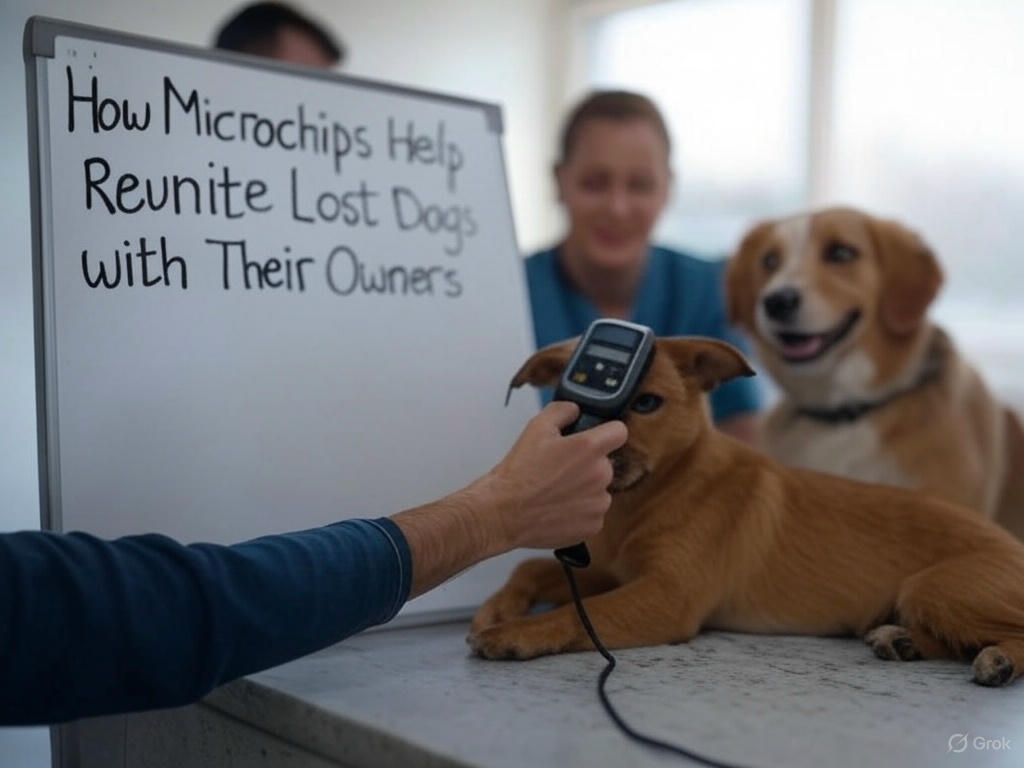Losing a beloved dog can be a heartbreaking experience, and the frantic search that follows often leaves owners feeling helpless. While collars and ID tags are a great first step in identifying a lost pet, they can break or fall off, leaving dogs vulnerable and difficult to identify. That’s where microchipping comes in. Whether you have a large breed or a Mini Bernese Mountain Dog, microchips offer added security. Dog microchips, about the size of a grain of rice, are implanted under the skin and contain a unique identification code. This code links back to the owner’s contact details in a secure database. In this blog post, we’ll explore how microchips help reunite lost dogs with their owners, discuss the scanning process at shelters and veterinary clinics, and explain how you can register or look up a microchip yourself.
What Exactly Is a Microchip?
A microchip is a small radio-frequency identification (RFID) device that is quickly and safely inserted under a dog’s skin—usually between the shoulder blades. It requires no battery or internal power source, relying instead on a scanner’s radio waves to relay the unique ID number it holds. Once the chip is registered, that number is tied to your contact information, which is stored in a database. If your dog is ever found away from home, anyone with a proper scanner can retrieve this information and contact you directly.
Shelters and Vets Scanning
One of the main reasons microchips are so effective is the widespread availability of scanners in animal shelters and veterinary offices. Whenever a lost dog is brought in, the staff typically checks for a microchip first. Using a handheld scanner, they pass it over the dog’s shoulders and back. If a chip is present, the scanner displays the ID number. With that ID in hand, shelter workers or veterinarians can perform a cat microchip lookup—which also works for dogs—to find out if the chip is registered and, ultimately, how to reach the owner. This quick, straightforward process often means the difference between a lonely wait in a shelter and a joyful reunion with family.
Ability to Identify the Owner
Even the most conscientious pet owner can lose track of a dog. Unexpected circumstances like storms, car accidents, or even curious dogs jumping fences can lead to pets becoming separated from their families. Microchips bridge the gap by providing a permanent link between the dog and the owner’s contact details. If someone finds your dog and takes them to a vet or shelter, staff can easily determine who the rightful owner is, thanks to the unique identification number stored on the chip.
It’s vital, however, that you keep your information current in the microchip registry. If you move or change phone numbers, remember to update those details. A microchip is only as effective as the data backing it up. By ensuring your contact information is accurate, you give your dog the best possible chance of getting home safely.
How Do I Find My Dog’s Microchip Number?
If you’re unsure what your dog’s microchip number is, don’t worry. Most veterinarians and shelters will scan your dog for free to retrieve the number. You can also check out this guide on how do I find my dog’s microchip number for step-by-step instructions. It’s a good practice to keep a copy of the microchip paperwork in a safe place or store the ID number in your phone, ensuring that it’s always accessible when you need it.
Dog Chip Registration
Once you have your microchip number, registering it is crucial. An unregistered chip won’t do much good if no contact details are available to match the ID. You can easily complete or update your dog chip registration online. It only takes a few minutes, and that small effort can make all the difference if your dog goes missing. Whenever your information changes, return to the registry and update your details to keep everything up to date.
Final Thoughts
Microchipping offers a simple, effective, and long-lasting solution for identifying lost dogs. While collars and tags are still useful and recommended, they’re no substitute for the security a microchip provides. Shelters and veterinary clinics routinely scan for microchips, making it easy to reunite families quickly. By keeping your contact details current and knowing how to look up or register a chip, you’ll be well-prepared should the unthinkable happen and your dog wanders off. Ultimately, a microchip is more than just a piece of technology—it’s peace of mind that helps ensure your furry companion always has a direct path back home.






